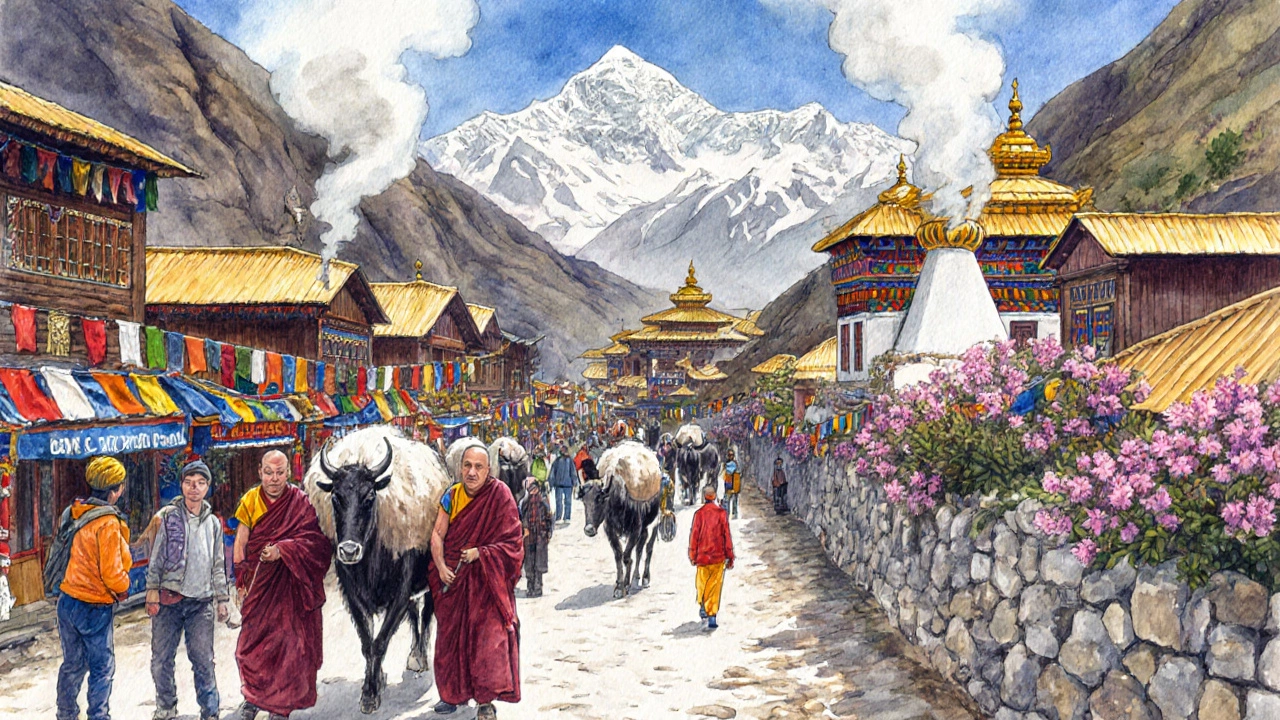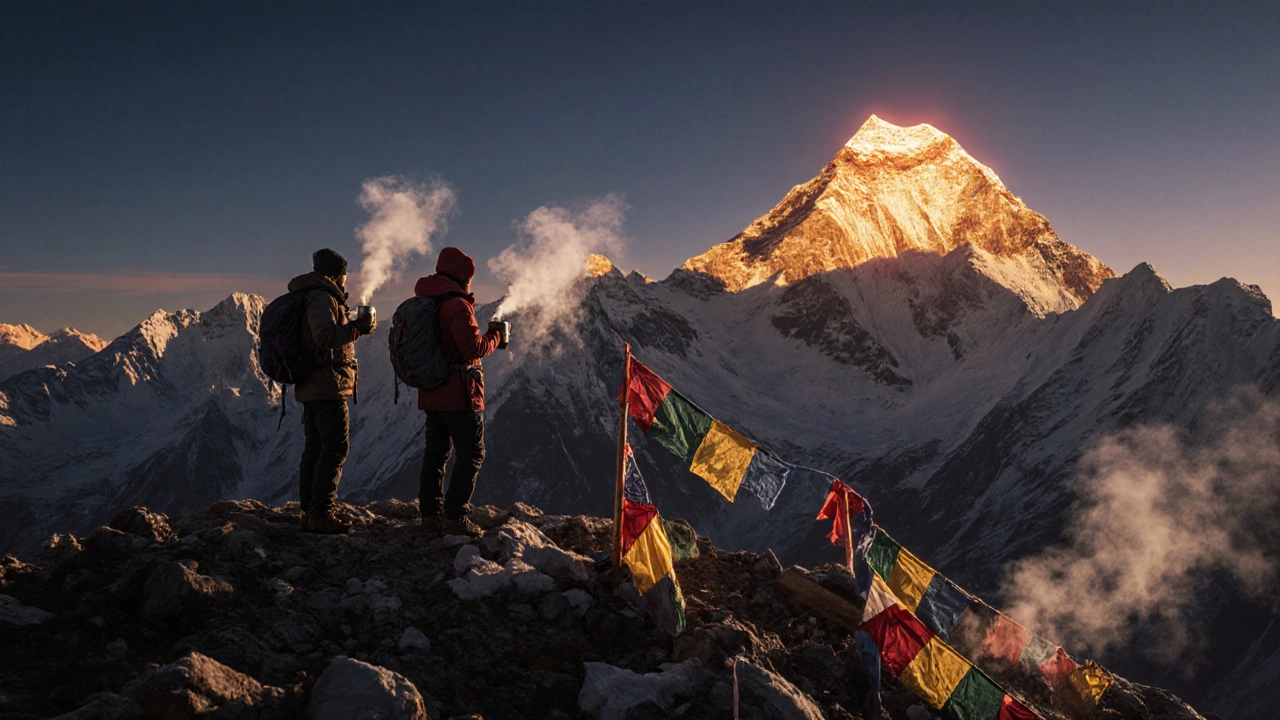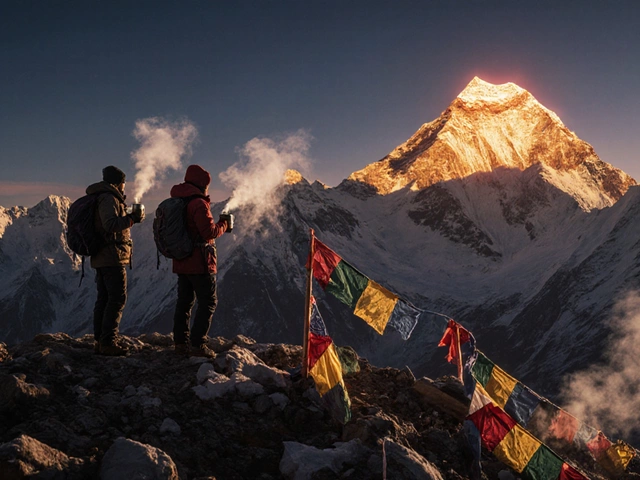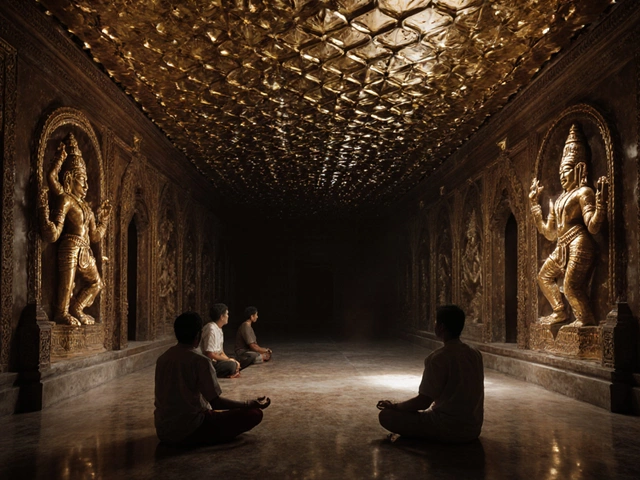Everest Base Camp Altitude Acclimatization Calculator
Altitude Planning Tool
Calculate your safe acclimatization schedule for the Everest Base Camp Trek. Proper acclimatization reduces altitude sickness risk from 70% to under 10%.
Your Acclimatization Plan
Risk Assessment
Recommended Daily Ascent
Max safe ascent rate: 300-500m/day after 3000m
Acclimatization Schedule
| Day | Altitude (m) | Activity |
|---|
People ask, "What’s the #1 hike in the world?" And the answer isn’t in the Himalayas of India-it’s in Nepal. But here’s the twist: if you’re reading this because you love trekking in India, you’re not wrong. The Everest Base Camp Trek starts just across the border, and for millions of Indian trekkers, it’s the ultimate goal. It’s not just a trail. It’s a pilgrimage of endurance, altitude, and awe.
Why Everest Base Camp Tops the List
The Everest Base Camp Trek isn’t the longest, steepest, or most remote trail on Earth. But it’s the one that pulls you in harder than any other. Over 50,000 people walk it every year. Nearly half come from India. Why? Because it’s not just about reaching 5,545 meters. It’s about walking through villages where prayer flags snap in the wind, drinking butter tea in lodges run by Sherpa families, and seeing Everest up close for the first time-not in a photo, but through the mist of dawn.
Unlike other famous hikes, this one gives you culture, history, and nature all in one. You pass through Namche Bazaar, the trading hub of the Khumbu region. You see monasteries older than your great-grandparents. You hear mantras chanted in the morning before you even sip your tea. And then, at Kala Patthar, you stand at 5,550 meters and watch the sun turn Everest into a golden spear.
What Makes It Different From Other Famous Hikes
Let’s compare. The Inca Trail to Machu Picchu? Stunning ruins, but you’re walking through a controlled, crowded path with permits limited to 500 per day. The Tour du Mont Blanc? Beautiful alpine meadows, but you’re mostly surrounded by European hikers in branded gear. The Appalachian Trail? Months of solitude, but no villages, no tea houses, no culture.
The Everest Base Camp Trek? It’s a living journey. You sleep in the same lodges as climbers preparing for summit attempts. You meet porters carrying 30-kilo loads on their backs, smiling as if they’re on vacation. You pass through Tengboche Monastery, where monks still chant in ancient Tibetan. You see yaks grazing near the trail, their bells ringing like wind chimes.
This isn’t a hike you check off a list. It’s one you carry with you.
The Route: What You Actually Walk
The classic route takes 12 to 14 days round-trip from Lukla. Here’s what you cover:
- Lukla (2,860m) - The flight from Kathmandu is wild. Small planes land on a cliffside runway. You’ll hear stories about it for years.
- Phakding (2,610m) - Your first real day of walking. Easy. You cross suspension bridges over the Dudh Kosi River.
- Namche Bazaar (3,440m) - The gateway to the high Himalayas. This is where you acclimatize. Two days here are non-negotiable.
- Tengboche (3,860m) - Home to the largest monastery in the region. The view of Ama Dablam is worth the climb.
- Dingboche (4,410m) - Another acclimatization day. The hills here are covered in rhododendron forests.
- Lobuche (4,940m) - Thin air. You feel every step. The memorials to climbers who didn’t make it sit quietly along the trail.
- Everest Base Camp (5,364m) - The goal. It’s not a summit. It’s a rocky plain with prayer flags, tents, and a sense of quiet triumph.
- Kala Patthar (5,550m) - The real reward. Sunrise here is the most photographed moment on Earth.
Most trekkers fly into Lukla and fly out the same way. Some do the longer version via Jiri or Salleri, but that adds 5-7 days and isn’t necessary unless you’re training for something bigger.

Why Indians Love This Trek
Over 25,000 Indian trekkers hit this trail every year. Why? Because it feels familiar. The spiritual weight. The silence between prayers. The way elders say, "Go to the mountains. They’ll teach you patience."
Many Indian trekkers start with the Valley of Flowers or the Roopkund Trek. Those are beautiful, but they’re short. Everest Base Camp is the next level. It’s the trek that turns a weekend hiker into someone who talks about altitude sickness like it’s a badge of honor.
And the cost? For an Indian traveler, it’s surprisingly affordable. A full package with flights, permits, guides, and food runs between ₹80,000 and ₹1,20,000. That’s less than a luxury honeymoon in the Maldives. And you come back changed.
What You Need to Know Before You Go
This isn’t a walk in the park. Here’s what actually matters:
- Altitude sickness is real. 70% of trekkers feel symptoms. Headache, nausea, dizziness. The fix? Walk slow. Drink 4 liters of water a day. Sleep at the same altitude for two nights if you’re struggling.
- Permits are mandatory. You need the Sagarmatha National Park Permit (₹3,000) and the Khumbu Pasang Lhamu Rural Municipality Entry Permit (₹2,000). Your trekking agency handles this.
- Weather matters. Best months are March-May and September-November. Winter is freezing. Monsoon is muddy.
- Don’t skip acclimatization days. I’ve seen people push to Base Camp in 8 days. They turn back at Lobuche, vomiting and shaking. It’s not a race.
- Bring a power bank. Charging your phone costs ₹300-500 per hour in lodges. Your camera battery will die faster than you think.

Alternatives If You Can’t Go to Nepal
If you’re stuck in India and still want that Everest-level experience, try these:
- Harishchandragad Trek (Maharashtra) - Ancient fort, steep climb, 1,425m. Great for beginners.
- Kuari Pass (Uttarakhand) - Views of Nanda Devi, Kamet, and Trishul. Less crowded than Everest, more dramatic.
- Stok Kangri (Ladakh) - 6,153m peak. Technical climb, but the altitude is similar. For experienced trekkers only.
- Roopkund (Uttarakhand) - The Skeleton Lake. Mysterious, high-altitude, and hauntingly beautiful.
None of these match Everest Base Camp’s scale. But they’re the closest you can get without leaving India.
The Real Reason It’s #1
It’s not the height. Not the views. Not even the fame.
It’s the transformation.
You leave as a tourist. You return as someone who knows what silence sounds like at 5,000 meters. Who understands that carrying your own pack for 10 days changes your relationship with comfort. Who no longer thinks "I can’t" means the same thing it did before.
That’s why it’s the #1 hike in the world.
Is the Everest Base Camp Trek safe for first-time trekkers?
Yes, if you prepare properly. Most first-timers complete it without issues. The key is acclimatization. Don’t rush. Walk slow. Drink water. Listen to your body. Many trekking agencies offer guided trips with medical support. You don’t need to be an athlete-just determined.
Do I need a guide for the Everest Base Camp Trek?
Not legally required, but strongly recommended. A guide helps with navigation, permits, and spotting early signs of altitude sickness. They also connect you with local culture. Many Indian trekkers hire guides from Nepal or book packages through Indian operators who partner with Nepali agencies. It’s safer, smoother, and way less stressful.
Can I do the Everest Base Camp Trek in winter?
You can, but it’s not ideal. Temperatures drop to -20°C at night. Lodges freeze. Trails get icy. Fewer people are around, which means less support. If you go, you need serious cold-weather gear-thermal layers, insulated boots, and a high-quality sleeping bag rated for -20°C. Most experts recommend sticking to spring or autumn.
How fit do I need to be to hike Everest Base Camp?
You don’t need to be a marathon runner, but you should be comfortable walking 6-8 hours a day for 10+ days. Start training 2-3 months before: hike hills, carry a 10kg backpack, and do stair climbing. Cardio helps, but endurance matters more than speed. If you can walk 10km in 2.5 hours with a backpack, you’re ready.
Is the Everest Base Camp Trek worth the cost?
If you value experiences over things, yes. For ₹1 lakh, you get a life-changing journey, photos that make people stop scrolling, and stories you’ll tell for decades. Compare that to a new phone or a vacation to Bali. One fades. The other reshapes you.
What Comes After Everest Base Camp?
Once you’ve stood at Kala Patthar, you’ll start looking at other peaks. The Annapurna Circuit. The Langtang Valley. The Goecha La Trek in Sikkim. You’ll realize the Himalayas aren’t just a destination-they’re a conversation. And Everest Base Camp? It’s your first word.





